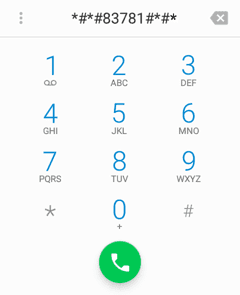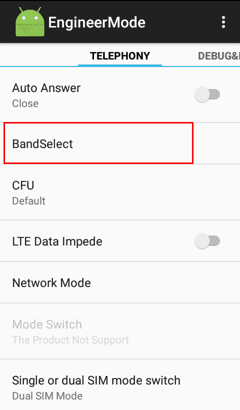Do you have yourself an Android device using a SPD (Spreadtrum) Chip, and you’re wondering which 4G/LTE Bands it can work with? If so, then you’ve come to the right place.
I just covered on how to do this for MTK phones so I thought I should do one for Spreadtrum devices even though they may not be as popular.
If you’re not conversant with what 4G/LTE bands are and the various implementations that exist (FDD-LTE and TDD-LTE), you may want to find out what 4G/LTE is all about.
Now to what brought you here. You don’t need to install an app for this. Most phones, typically MTK ones, come with a hidden mode called Engineer Mode or Service Mode.
In some cases, however, even Spreadtrum devices come with their own version of Engineer Mode. It’s this pre-installed system app that we’ll be using for this task.
Check 4G/LTE Bands using Spreadtrum’s Engineer Mode
- Go to your phone dialler (preferably the stock one) and dial the following code: *#*#83781#*#*.When you enter the last asterisk (*), Engineer Mode should launch.

- Stay in that first page called Telephon) and open the BandSelect option.

- If you’re using a dual sim device, select the SIM which is 4G-enabled in the next page. If 4G is enabled in both SIMs, you can select either one of them.
- In the next page you should find all the LTE bands the device is compatible with, along with GSM (2G) and WCDMA (3G) bands.

Depending on your phone it may be compatible with either LTE-TDD or LTE-FDD modes or even both. You can enable and disable any of the bands though be careful when doing this. You may have to reboot to apply the changes.
How to Interpret the Bands
The first part (TDD and FDD) signifies the type of LTE standard the device is compatible with. The second part (i.e Band #) is the LTE Band and that’s what you want to know.
You may also want to know the respective frequency for each band, however the app does not list those since the band alone can tell you that. So for instance, Band 40 is assigned the frequency 2300MHz, Band 3 to 1800MHz and Band 5 is 850MHz etc.
It’s worth noting that Bands 1 to 32 are assigned to FDD-LTE while Bands 33 to 44 are assigned to TDD-LTE. So if your phone has no bands above 33 it probably won’t work with a carrier or countries that use the TDD-LTE standard of 4G/LTE.
If you’re interested in knowing the exact frequencies that each band is assigned to, you can check this Wikipedia Table.
Can’t Get Into Engineer Mode?
If you can’t get into Engineer Mode there are couple of things you can try:
- Search online for the specific code for your phone brand or model.
- Find an app on the Play Store that can launch Engineer Mode for you.
If you still can’t get into Engineer Mode you can always check the 4G/LTE bands your phone can work with by looking at the specifications of your exact phone model.
It’s not the quickest of ways but it’s a sure way should all else fail. If you use a well known brand you can find your phone’s specs by searching your brand and exact model in phone information sites like GSM Arena or Phone Arena.
A Google search may also bring quick results. Just make sure you check the correct model of your phone since some major brands (e.g. Samsung) release multiple models of one base model as the phones are destined for different territories.
When you get to the specifications, check under Network 4G Bands. You should find a listing there with numbers in the following format: 1(2100), 3(1800), 20(800), 40(2300) and so forth.

As you might have figured out already, the first part signifies the Band and the one inside the brackets is the respective Frequency.
